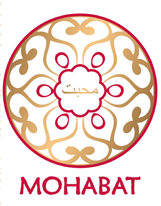Handwoven carpets are the pride of Kashmiri artisans. With the dominance of industrialization today, most carpet artisans in other parts of the world have adopted machines in their work process, especially for cutting carpets as it requires remarkable accuracy, intensive work, and tremendous strain on both the mind and eyes. According to the artisans, their hands will get abrasions after cutting a single carpet. However, the Kashmiri artisans insist in hand-cutting each carpet in pursuit of perfection, not only because hand-cutting can retain the thickness of the carpet, but more importantly, it can distinguish the different patterns and texture of the carpet, resulting in more delicate and elaborate patterns. Even though it is difficult to see the difference between the thicknesses of different patterns on the carpets, you will feel the exceptional craftsmanship when you softly touch the unique texture of each carpet.
The design of the silk carpets is also worth noting. Each family of carpet artisans has a special carpet blueprint that stays solely within the family, and has been further developed and improved by each generation of artisans in the family. Therefore, the carpets produced by each Kashmiri family are different, and because it is impossible for each generation to complete every single blueprint passed down by their ancestors, it is unlikely to find two identical carpets at the same time.

